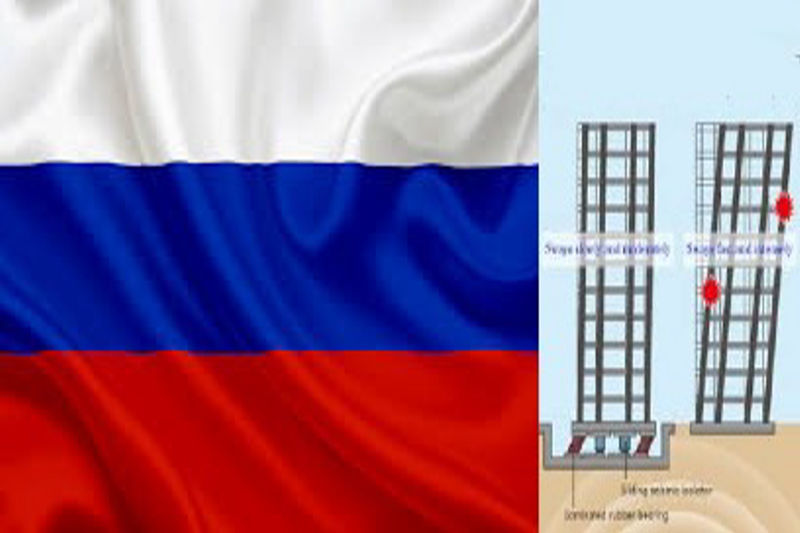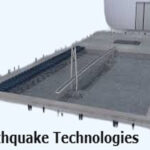Russia, the largest landmass in the world, is spread across several seismic zones, such as the Sakhalin region, the Caucasus, and the extremely active Kamchatka Peninsula. Earthquakes in these areas pose significant risks to infrastructure and human life. To mitigate these dangers, Russia has invested in earthquake monitoring, early warning systems, and disaster resistant construction. But how advanced are Russia’s earthquake technologies compared to global leaders like Japan and the United States?
This article explores Russia’s seismic research, early detection systems, engineering innovations, and future developments in earthquake resilience.
1. Russia’s Seismic Monitoring and Early Warning Systems
Russia operates an extensive seismic monitoring network, primarily managed by the Russian Academy of Sciences (RAS) and the Federal Service for Hydrometeorology and Environmental Monitoring (Roshydromet).
Key Features of Russia’s Seismic Network
Over 300 seismic stations across high risk regions like Kamchatka and the North Caucasus.
Deep earth sensors to detect precursor seismic activity.
Integration with international networks, including the Comprehensive Nuclear Test Ban Treaty Organization (CTBTO), which helps monitor underground nuclear tests and earthquakes.
Early Warning Systems in Russia
While Russia does not yet have a nationwide Earthquake Early Warning System (EEWS) like Japan’s or China’s, it has implemented regional alert systems in vulnerable areas:
Kamchatka Tsunami Warning System: Detects offshore earthquakes that could trigger tsunamis.
Caucasus Seismic Network: Monitors tremors near Sochi and Grozny.
Limitations:
Delayed public alerts due to reliance on manual data verification.
Limited smart phone integration compared to Japan’s instant mobile alerts.
2. Earthquake Prediction Research in Russia
Russia has a long history of earthquake prediction research, with notable contributions from Soviet era scientists.
Promising Prediction Methods
Electromagnetic Field Monitoring: Russian researchers study changes in the Earth’s electromagnetic field before quakes.
Radon Gas Detection: Increased radon emissions from faults may signal impending earthquakes.
Animal Behavior Studies: Some Russian scientists track unusual animal movements as potential quake indicators.
Challenges in Earthquake Prediction
No reliable short term prediction method exists yet.
The public may become distrustful of false alerts.
3. Earthquake Resistant Construction in Russia
Given the risks in cities like Petropavlovsk-Kamchatski and Vladikavkaz, Russia has developed strict building codes for earthquake prone zones.
Engineering Innovations
Base Isolation Systems: Used in critical infrastructure like nuclear power plants.
Reinforced Concrete Framing: Ensures highrise stability in seismic zones.
Seismic Dampers: Installed in bridges and skyscrapers to absorb shockwaves.
Case Study: The Sochi Olympic Village
Built to withstand magnitude 9.0 earthquakes.
Utilized Japanese seismic resistant techniques for added safety.
Weaknesses:
Older Soviet era buildings remain vulnerable due to outdated designs.
Corruption in construction sometimes leads to substandard earthquake proofing.
4. AI and Satellite Technology in Earthquake Research
Russia is increasingly using artificial intelligence (AI) and satellite data to improve earthquake analysis.
AI Applications
Machine learning models analyze seismic patterns for better forecasting.
Neural networks help distinguish between natural tremors and manmade explosions.
Satellite Based Monitoring
GLONASS (Russia’s GPS alternative) tracks ground deformations.
Remote sensing satellites detect fault line shifts before major quakes.
5. Public Awareness and Emergency Preparedness
Russia conducts regular earthquake drills in high risk regions, but public awareness remains inconsistent.
Government Initiatives
In Sakhalin and Kamchatka, emergency SMS alerts are utilized.
School Earthquake Drills: Mandatory in seismically active areas.
Criticism:
Programs for rural preparedness are underfunded.
Slow emergency response in remote regions.
6. Challenges and Future Developments
Russia faces several obstacles in advancing earthquake resilience:
Vast geography makes nationwide monitoring difficult.
Access to Western seismic technologies is restricted by economic sanctions.
Climate change is increasing permafrost thaw, which may trigger more quakes in Siberia.
Future Technologies in Development
Quantum Seismic Sensors: For ultra precise earthquake detection.
Automatic Gas Shutoff Valves: To prevent post quake fires.
Cross Border Collaboration: With China and Japan for improved early warning systems.
Conclusion: Is Russia a Leader in Earthquake Technology?
While Russia has made significant strides in seismic research and earthquake resistant engineering, it still lags behind Japan and the U.S. in public alert infrastructure and early warning systems. However, with continued investment in AI, satellite monitoring, and international cooperation, Russia could emerge as a key player in global earthquake disaster prevention.
“Does Russia have developed earthquake technologies?”
“Russia earthquake early warning system”
“Seismic monitoring in Russia”
“Earthquake resistant buildings in Russia”
“AI earthquake prediction Russia”
“Kamchatka tsunami warning system”


